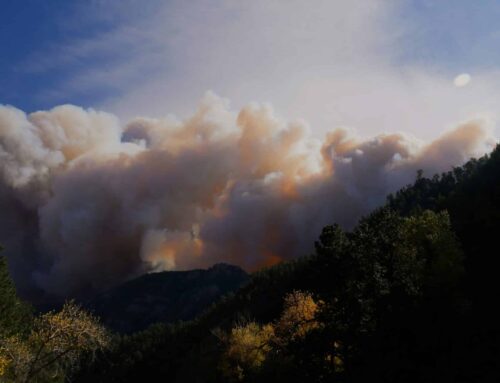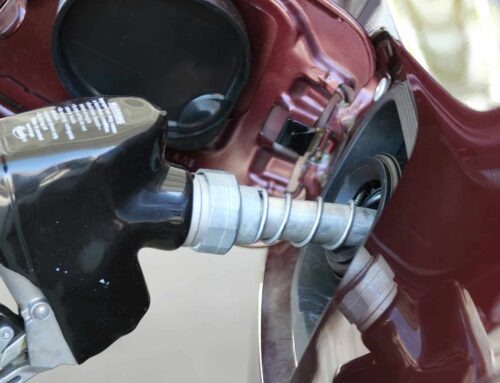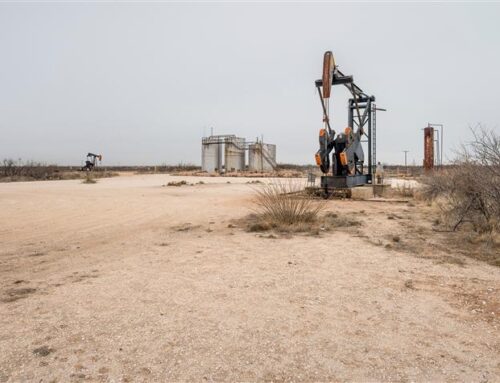Last week, the Department of the Interior finalized its “2020 Valuation Reform and Civil Penalty Rule,” determining how oil, gas, and coal produced on federal and tribal lands is valued for royalty purposes. The rule marks the end of the Trump Administration’s years-long attempt to roll back provisions cemented in 2016 that collected more royalty revenue from oil, gas, and coal producers. The Department of the Interior (DOI) estimates that taxpayers will lose $29 million per year because of the new rule. Actual losses are likely to be higher if the rule remains in effect.
Background
Mineral producers agree to pay federal taxpayers and tribes royalties for the rights to extract valuable resources from public lands ands waters. How much producers pay depends on the royalty rate – a set percent of sales revenue agreed to when federal leases are issued – the quantity of resources produced, and how those resources are valued. For example, the royalty rate for most oil and gas leases in the Gulf of Mexico is 18.75%, and if a producer sells one barrel of oil valued at $100, federal taxpayers get $18.75. But if the barrel is valued at $50, federal taxpayers only get $9.38.
Rule History
In July 2016, the Office of Natural Resources Revenue (ONRR) within the DOI finalized a new rule (“2016 Rule”) that set out criteria for how oil and gas developed on federal lands and waters, and coal mined from federal and tribal lands, would be valued in the royalty equation. By closing some loopholes and implementing new methods, the 2016 Rule was expected to increase royalty revenues by $78 million annually.
Under the new Trump Administration, ONRR postponed when the 2016 Rule would take effect and then repealed it altogether in August 2017. Federal courts later ruled that both moves were illegal under the Administrative Procedures Act, and ONRR was forced to re-issue the original 2016 Rule with one small exception in October 2020. In the same month, however, ONRR also proposed a new rule (“2020 Rule”) repealing many provisions of the 2016 Rule. The new rule became final on January 15, 2021.
Rule Provisions
The following table provides a summary of the rules’ changes to federal resource valuation that affect how much ONRR will collect in royalties for federal taxpayers and some tribes:
Summary of Oil & Gas Valuation Rule Changes with Annual Royalty Effect (Estimated by ONRR) |
||||
Rule Provision |
Pre-2016 |
2016 Rule |
2020 Final Rule |
Est. Annual Royalty Effect |
Index Pricing |
||||
| For Natural Gas Valuation |
n/a |
non-arm’s length only |
arm’s-length AND non-arm’s-length |
$5,620,000 |
| For NGL Valuation |
n/a |
non-arm’s length only |
arm’s-length AND non-arm’s-length |
21,141,000 |
| Price for Non-Arm’s-Length Gas |
n/a |
bidweek high price |
bidweek average price |
-4,488,000 |
Deductions/Allowances |
||||
| Transportation Allowance for Index-Based Gas Valuation |
n/a |
5% offshore, $0.3/Mmbtu max |
10% offshore, $0.4/Mmbtu max |
–4,642,000 |
|
10% onshore, $0.3/Mmbtu max |
15% offshore, $0.5/Mmbtu max |
-2,479,500 |
||
| Gas Transportation Allowances |
50% cap w/ exceptions |
50% hard cap |
50% hard cap |
– |
| Oil Transportation Allowances |
50% cap w/ exceptions |
50% hard cap |
50% hard cap |
– |
| Gas Processing Allowances |
66 2/3% cap w/exceptions |
66 2/3% hard cap |
66 2/3% hard cap |
– |
| Extraordinary Processing Allowances |
allowed |
disallowed |
reinstated |
-11,131,000 |
| Deepwater Policy – gathering costs deductible | not allowed by rule, allowed by guidance | not allowed by rule | allowed by rule |
-32,900,000 |
Total |
-$28,879,500 |
|||
Deepwater gathering
The provision with the biggest effect on royalties in both the 2016 and 2020 Rules concerns what costs producers can deduct from the value of oil and gas produced in the Gulf of Mexico before royalties are collected – referred to as ‘Deepwater Policy’ in the above chart.
ONRR collects royalties on the sales value of federal oil and gas but allows producers to deduct some costs needed to transport oil and gas to the point of sale. These deductions are ‘transportation allowances.’ What costs are included as a transportation allowance is at issue in the rules. If more costs are allowed as transportation deductions, the value of federal resources is lower when the royalty rate is applied and ONRR collects fewer royalties.
In 1999, the Minerals Management Service, the pre-cursor to ONRR, issued guidance to operators that ‘gathering costs’ for leases operating in water more than 200 meters deep could be included as transportation allowances. ‘Gathering’ refers to moving oil and gas underwater from different wells in a lease or unit to a collection point. The MMS guidance departed from the underlying 1988 regulations without actually changing the regulations. In the 2016 Rule, ONRR withdrew the guidance, or “Deepwater Policy,” and put the original regulations that disallowed gathering costs as transportation allowances back into force.
In the 2020 Rule, ONRR effectively writes the Deepwater Policy into the regulations instead of re-issuing it as guidance. Initially, ONRR proposed expanding the deductibility of gathering costs to shallow water leases, but the proposal was removed in the final rule. When ONRR revoked its Deepwater Policy guidance in the 2016 Rule, royalties were expected to increase by $20.5 million per year. Now, because lessees can now include gathering costs in transportation allowances by rule, taxpayers will lose an estimated $32.9 million per year.
Other Allowances
In addition to rescinding the Deepwater Policy, the 2016 Rule also put hard caps on how much producers could deduct in transportation and processing allowances in royalty calculations. Similar to transportation allowances, ONRR allows producers to subtract their costs for removing foreign compounds from gas before sale as a processing allowance.
For decades, the transportation allowance producers could deduct from the value of federal oil and gas before royalties were calculated was capped at 50% of the sales value. Similarly the processing allowance was capped at 662/3% of the sales value of federal gas. However, producers could apply to ONRR to waive these caps. In some cases, they could also apply for ONRR to deduct up to 99% of sales value through an “extraordinary processing” allowance. The 2016 Rule ended the ability of producers to apply for these exceptions, essentially turning the original allowance limits from “soft” caps into “hard” caps.
Initially, the 2020 Rule proposed reversing course entirely and allowing ONRR to accept producers’ applications for all exceptions once again. In the final 2020 Rule, the proposal for eliminating the 50% hard cap on transportation allowances and 662/3% hard cap on processing allowances was abandoned.
The 2020 Rule does, however, reinstate the ability of producers to apply for “extraordinary processing allowances.” The provision has consequences in particular for the State of Wyoming. According to ONRR, producers have filed fewer than 10 requests for these allowances in more than 30 years, and only two were approved. Both facilities with prior approvals for extraordinary allowances are located in Wyoming. Reinstating those allowances is expected to reduce royalty collections by $11.1 million annually. Because half of all royalty revenue is shared with state where oil and gas is produced, Wyoming will receive approximately $5.5 million less per year, or $55 million less over 10 years because of the Final Rule. The State of Wyoming apparently endorsed the provision anyway.
Index-Based Valuation
By statute, the federal government must receive fair market value for the use of federal resources, including oil, gas, and coal. When valuing federal resources to achieve that, one basic precept is that arm’s-length sales are the best indicator of market value. That is, what price an independent buyer and seller agree to for oil or gas should be the same price ONRR uses to value the minerals while calculating royalties. The 2020 Rule allows operators to choose to depart from this valuation standard, among other changes.
One challenge the 2016 Rule tried to address was how to value federal gas and coal that a lessee– the mine or well operator/owner that has to pay royalties – sells to an affiliated company, a non-arm’s-length sale. Previously, gas not sold at arm’s-length was valued at a benchmark price that was determined through various methods. The benchmark prices proved difficult to calculate in practice. The 2016 Rule replaced the benchmark prices with two options for a lessee to choose from; gas and natural gas liquids (NGLs) sold to an affiliate could be valued either: (Method A) by looking at the gross proceeds of the affiliate when the gas is sold later at arms-length; or (Method B) by using an index-price published for specific locations in an ONRR-approved publication.
The 2020 Rule largely left the system for valuing gas sold through a non-arm’s-length contract intact, but with several changes for cases when lessees choose to use index-pricing (Method B). During a five-day trading period at the end of each months, natural gas is bought and sold for delivery throughout the following month. At the beginning of that month, the approved publications post the range of prices agreed to during the trading period, or “bidweek,” as well as the average price for many different locations, or “index pricing points.” Under the 2016 Rule, ONRR required lessees to use the highest bidweek price posted for their given location to value their non-arm’s-length gas contract. In the 2020 Rule, ONRR allows lessees to use the average bidweek price instead. The change is expected to reduce federal royalties by $4.5 million per year.
If a lessee chooses Method A for valuing non-arm’s-length gas contracts, they can take a transportation allowance equal to the transportation costs the lessee or its affiliate actually incurred. If a lessee chooses Method B, however, ONRR simply sets a certain percentage that the lessee can deduct from the royalty value in lieu of the formal transportation allowance. The 2020 rule increases these percentages as well as the maximum cent/MMbtu rate allowable. The new rates are expected to reduce federal royalties by $7.1 million per year.
Transportation Deduction when Valuing Non-Arm’s Length Federal Gas with Index Prices |
||||
| Location | Transportation adjustment (%) | Min. rate (cents per MMbtu) | Max rate (cents per MMbtu) | |
| 2016 Rule |
OCS, GOM |
5 |
$0.10 |
$0.30 |
|
All Other Areas |
10 | 0.1 |
0.3 |
|
| 2020 Final Rule |
OCS, GOM |
10 | $0.10 |
$0.40 |
|
All Other Areas |
15 | 0.1 |
0.5 |
|
Lastly, the 2020 Rule departs from accepted valuation practice and extends the ability to use index pricing for valuation to gas and NGL that is sold at arm’s-length. That is, instead of charging a lessee royalties based on the price they actually got from an independent buyer, ONRR is allowing a lessee to choose to value their gas at an unrelated published price. ONRR claims that if half of all lessees take the new option, federal royalties will actually increase, particularly from natural NGL sales. The methodology behind the finding of an increase in $21 million annual increase in NGL royalties is shaky at best.
Unlike natural gas, there is not one price NGLs are sold for because different liquids command different prices. To come up with the increased royalty conclusion, ONRR calculated a weighted average price, ‘basket price,’ for NGLs then applied it to the volume of all federal NGLs sold. The problem is that the weights, or portions of the basket, for each type of liquid are reported by an industry publication and do not reflect the liquids’ actual proportion of total federal NGLs sold. ONRR simply doesn’t know what proportion of federal NGLs are, say, ethane or isobutane. For this reason, ONRR declined to estimate the royalty impact of allowing lessees to value non-arm’s-length NGLs through index pricing in the 2016 Rule. Yet ONRR is now estimating that index-pricing for arm’s-length NGLs will defray more than a third of the cost of the other 2020 Rule changes.
If for no other reason, the revenue raised by NGL index pricing is likely lower and the total cost of the 2020 Rule is likely higher because index pricing is a choice lessees can make and change once very two years, and they are unlikely to choose a method where they pay substantially more year after year.
If the extension of index-price valuation to arm’s-length contracts ends up taking effect, ONRR should carefully evaluate whether royalty collections increase. The 2020 Rule maintained documentation requirements for such sales, making a comparison between valuation methods possible. Valuation with index-pricing is preferred by industry and simplifies royalty administration. If it brings in more revenue in practice and not just on paper, the departure from standard practice would be justified.










